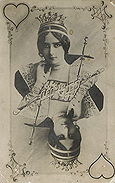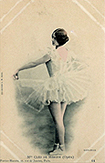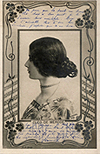The browser will either open the file, download it, or display a dialog.
|
|
Cléo de Mérode's Postcard Stardom |
|||||
|
Introduction |
|||||
| While the postcard would propel her to extraordinary, worldwide celebrity from 1900 onward, Mérode first entered the spotlight several years earlier. This she accomplished by pursuing a morally dubious though well-worn path to female notoriety—playing, if not actually fulfilling, the role of the courtesan, or what Simone de Beauvoir would call the "hetaira," a typical role for female performers from this period. Her career, in the decade surrounding 1900, offers an exemplary trajectory: moving away from the conventional courtesan type, she evolved toward a more modern, mass-media, mass-market sort of stardom. Cléo de Mérode's renown offers a missing link between, on the one hand, the rise of show business celebrities, especially female performers, during the fin-de-siècle; and, on the other, the appearance of the first movie stars, in the mid teens. | ||||||
| Mérode's case needs to be understood as well in relation to another, earlier model of fame: the great man, and the great writer in particular. She suggests as much in her memoirs, singling out Victor Hugo's funeral as the point of departure for her own rise to prominence.3 In the late nineteenth and early twentieth centuries, as veneration of male literary idols like Hugo gave way to fascination with stage performers, the enchanting effigies of these predominantly female figures were disseminated to an ever-wider audience by potent new visual media—particularly the illustrated popular press, posters, postcards—which, in many ways, rehearsed the image-building power of cinema and television. To be sure, nineteenth century French culture had distinguished between opposing modes of renown, extolling fame everlasting, while disparaging evanescent celebrity. But in Mérode's day, a key transition was underfoot. The monumental ideal of enduring fame—the "dream of stone"—was already in decline, supplanted by a new vision of passing celebrity as a goal in itself, largely divorced from earlier notions of cultural permanence and heroic merit (i.e. great accomplishments justifying great renown). Would-be immortality in the collective memory, embodied most emphatically in the marble and bronze monuments of early Third Republic "statuemania," was yielding to a new cultural order of mass-media images—ubiquitous, compelling, but fleeting.4 Out of this shift, Cléo de Mérode emerged as perhaps "the first modern icon."5 | ||||||
| Various factors have obscured Mérode's role in such developments, both from the eyes of her contemporaries, and from our modern critical gaze. These include: the rapid pace of change at the time; her own tentativeness about what she had accomplished; and the diffusion of her public persona across a broad spectrum of cultural forms, from more traditional plastic arts (painting, sculpture, caricature), to performance (classical ballet, opera, pantomime, variety dancing), to emergent media (from photography to film). Reconstructing the entirety of Mérode's career and impact would require a wide-ranging, cross-disciplinary analysis of her renown and its representations, probing much diverse and forgotten material to uncover salient patterns—a worthwhile endeavor, but largely beyond the scope of this essay, except insofar it can provide a helpful context for her postcard stardom. | ||||||
| Focusing on postcards brings out what is unique and most suggestive in Mérode's celebrity. It also draws upon a substantial body of evidence long known only to dedicated postcard collectors, but now available to anyone with an internet connection. By following online auctions for a few months, one can view more Cléo de Mérode postcards, and a greater variety of them, than the most assiduous collector might encounter in a lifetime of rummaging through antique shops and flea markets. From this scrutiny, as well as from more conventional archival research, there emerges the composite portrait of a fascinating, liminal figure, balanced precariously between vice and virtue, notoriety and stardom, photography and cinema, past and future, her public persona all the more compelling for its many contradictions and inconsistencies, that betray the broader tensions of a key, transitional moment in the history of both fame and visual culture.6 | ||||||
|
Dancing Toward Notoriety
Born in Paris in 1875, Cléopâtre-Diane de Mérode entered the Opéra ballet at age seven and worked her way up the ranks. She was a good dancer but above all her beauty caught the public's eye. At sixteen she debuted her trend-setting, hallmark hairstyle: over the ears, usually in a chignon, often worn with metal bands (fig. 2). When Cleo de Mérode entered the Opéra ballet, female performers were, or at least were assumed to be, courtesans. In an age when "virtuous" women were largely restricted to the domestic sphere—and femme publique, in an absolute sense, meant prostitute—they were enticingly public figures. Dancers, like actresses, cabaret singers, even circus acrobats, appeared on stage, their charms on display, available for the pleasure of affluent protectors, and the fantasies of all. From the eighteenth century through the First World War, despite revolutions and evolutions in French society and the arts, a certain mythology of the venal female performer persisted.7 |
|||||
|
During this period young dancers or petites danseuses loomed especially large in the collective imagination. The most coveted of all were the so-called rats, the 12–16 year old girls in the Paris Opéra corps de ballet, an institution that, according to Lenard R. Berlanstein, had a long-standing reputation as a "'national harem.'"8 Likewise, Willy's 1904 book on danseuses still characterized the Paris Opéra as "a sanctuary for Venus's progeny, a libertine haven," subject of "a thousand salacious anecdotes, a thousand scandalous rumors."9 In this temple of licentiousness, the young girls of the corps de ballet were the not-quite vestal virgins, and the Foyer de la Danse, or dancers' lounge, the inner sanctum. Here only the wealthiest, most powerful men could enter, mingle with the dancers, and pursue those they fancied—as in the 1901 Steinlen illustration from L'Assiette au beurre (fig. 3)10—practices that amounted to a kind of "state-sponsored prostitution."11 | |||||
| While only the elite had access to the Foyer de la Danse and to the performers within, the rest of society could dream, and did. Degas's dancers offer just the most familiar embodiment of an obsession represented abundantly and suggestively in French culture and, particularly, in visual culture at the time. Emblematic examples include Jean Béraud's 1889 painting Les Coulisses de l'Opéra (Behind the Scenes at the Opéra [Musée Carnavalet, Paris]), in which well-dressed gentlemen consort with young ballet dancers after a performance; an 1891 show by the same name, produced at the Musée Grévin and based on Nestor Roqueplan's 1855 chronicles of life at the Opéra; and, the 1888 novel L'Amant des danseuses, (The Dancers' Lover), by Félicien Champsaur, who later became obsessed with Mérode and for a while persecuted her with marriage proposals.12 Both of the latter works were also advertised with posters by Jules Chéret featuring exuberant, alluring young dancers, and figuring together in the first volume of the influential Les Maîtres de l'affiche series13 published from 1896 to 1900, pivotal years in both the evolution of visual culture and, closely linked to this, Cléo de Mérode's emergence as a celebrity. Les Maîtres de l'affiche played a key role in confirming and promoting the fin-de-siècle vogue for posters and poster collecting, which in turn lay the groundwork for the yet more widespread vogue for postcards from 1900 to 1914. Though Mérode rose to prominence as early as 1896, she would ride the postcard craze to international fame, beginning in 1900. | ||||||
| Cléo de Mérode already began to attract attention in the press through 1894 and 1895. Not surprisingly, little of this coverage had to do with her terpsichorean talents. Instead, journalists indulged in imaginative innuendo: whom would she ensnare with her charms; what jewels would she receive in exchange; how fickle would her affections be? She was presumed to be destined for distinguished debauchery, both by her training in the corps de ballet—the most elite finishing school for young courtesans—and by her exceptional beauty. These expectations would only grow keener when she became a featured solo performer in the years ahead, competing for billing, and compared routinely with such notorious dancer-courtesan figures as Émilienne d'Alençon, Caroline Otero, and Liane de Pougy. But, notwithstanding the constant insinuation and conjecture in the press, Mérode seems to have been far more chaste than many of her peers at the Opéra, and than the variety dancers who were considered her rivals during her solo career. She lived with her overprotective mother until the latter's death in 1899 (Cléo was almost 24) and had just two romantic involvements, both of them discreet and long-term.14 In short, there was a significant disparity between what her contemporaries imagined, and what she did, scarcely exaggerated in Liane de Pougy's roman à clef, Mademoiselle de la Bringue's Sensations. Of Cléo de Mérode's aptly-named double, Pougy snipes, "Mademoiselle Méo de la Clef personified love, WITHOUT MAKING LOVE."15 | ||||||
| How to interpret this gap between perception and reality? It may reveal less about Mérode's innate virtue or religious convictions (she seems to have been an observant Catholic) than about her class and economic status (from an aristocratic family of some means, she needed moneyed "protectors" less than most fellow dancers, who came from humbler backgrounds).16 But, above all, it provides a crucial context for understanding the beginning of her career and, specifically, the deliberateness with which she pursued fame. No hetaira in deed, she learned to cultivate this role all the same, to capitalize on the public's expectations. In order to further her renown, she would pose—literally and figuratively—as a courtesan. | ||||||
Posing as Courtesan
In the fall of 1895 came the first news of Mérode's alleged liaison with Belgium's King Léopold II, who had accosted her in the Foyer de la Danse, with all its iniquitous associations.17 Their supposed affair was almost certainly apocryphal; indeed the King may have staged it to conceal his actual relations with Émilienne d'Alençon.18 But it made such irresistibly good material—the most glamorous young dancer at the Paris Opéra kept by the most notorious old roué on the continent!—that chroniclers and caricaturists continued to spin versions of the story for years. Mérode may well have been surprised at first by the attention generated; in her memoirs, she writes:
Perplexing as it may have been, this frenzy did provide the initial catalyst for Mérode's extraordinary rise to prominence in the years ahead, and gave her first-hand insight into the public relations potential of being—or at least appearing to be—a courtesan. |
||||||
| 1896 would be Mérode's annus mirabilis. Through the course of the year, a succession of much-publicized events made her the hottest 'new' celebrity in France. In the spring, the newspaper L'Éclair sponsored a beauty contest—an increasingly popular type of event in the press, inaugurated in the mid 1850s by none other than fame-monger P.T. Barnum, and anticipating the full-blown, much-touted pageants (Miss America, Miss France, etc.) that would flourish in the decades ahead.20 Readers were asked to choose the most beautiful woman on the Parisian stage, from among those featured in the album Nos jolies actrices.21 Mérode won, by an astonishing margin. Out of about 7,000 votes cast by the public for a field of 131 female performers, she garnered over 3,000, almost 1,000 beyond her nearest competitor and far ahead of such celebrated names as Liane de Pougy, "La Belle" Otero, Nellie Melba, Cécile Sorel, Jane Hading, Sarah Bernhardt, and Réjane.22 Lovely as Mérode may have been, her youthful pulchritude alone cannot explain such a lopsided result. Rather, the extensive recent coverage of the Léopold affair must surely have prompted the public to select the king's supposed favorite as beauty queen. Of course to be honored as a stage beauty at a time when female performers were seen as dissolute was a morally dubious distinction, and the implicit Léopold connection made it more so. Lurking just beneath the surface of this early beauty contest was the specter of elite prostitution, linking contestants to a long line of celebrated courtesans, from ancient Greek hetairas, to French royal mistresses, to the grandes horizontales (or notorious, high-class courtesans) of Mérode's day. | ||||||
| Two further events in 1896—the controversy over a revealing new statue, and the world premiere of a suggestive new ballet—cast Mérode yet more emphatically as a courtesan. To some extent she continued to be swept up by circumstances beyond her control but, increasingly, she became a willing participant in her own rise to notoriety. In particular, she relished styling herself in the role of the Greek courtesan Phryne, a favorite femme fatale figure in fin-de-siècle France, much like her biblical counterpart Salome. Phryne's legend was familiar to Mérode's contemporaries, recounted and represented regularly during this period in everything from comic operas, (e.g., Saint-Saëns's 1893 Phryné), to cabaret shows, (e.g., Maurice Donnay's Phryné: Scènes Grecques, which premiered at the Chat Noir in 1891), to risqué postcard and cigarette card series (figs. 4 and 5). It was said that, while Phryne's incomparable beauty drove wealthy and powerful men to ruin, she longed for fame and gave herself for free to artists who would immortalize her. Ancient beauty, siren, fame-seeker, and model for so many artists' models in the centuries ahead, she was believed to have posed for Praxiteles' Aphrodite of Knidos, the archetypal female nude in Western art, prototype of so many Venuses to come.23 In the most celebrated episode of her life, Phryne was tried on capital charges for impiety, and acquitted not by the skillful oratory of her lover Hyperides, but by revealing her unadorned body to the male judges, who were swayed by the irrefutable argument of her resplendent flesh. This is precisely the scene depicted in Jean-Léon Gérôme's Phryne before the Areopagus, a painting that dates from 1861, but was widely reproduced and still well-known a half-century later (fig. 6). Mérode's contemporaries were infatuated with Phryne because she combined roles that fascinated them in women of their own period: those of courtesan, femme fatale, beauty queen, and artist's, specifically sculptor's, model. | ||||||
| In the spring of 1896, prominent sculptor Alexandre Falguière's nude statue of Cléo de Mérode, titled La Danseuse, was the succès de scandale of the Salon (fig. 7). Shocking in its frankness, the sculpture was lampooned almost immediately in the popular satiric weekly Le Rire, in an article with the revealing title "L'Amour des statues."24 Mérode probably posed nude for the body, as Anne Pingeot has argued, but avowed only the bust.25 The very uncertainty about how much of La Danseuse was done from life incited public curiosity, and press coverage.26 Criticism of the work's aesthetic merits was mixed. Negative comments focused on perceived imperfections of the body, posture, and gestures, whether the ample "hottentot" hindquarters, or the corset-pinched waist, or the position of the hands as a sign of stupidity.27 But whatever the statue's shortcomings, it—and its sitter—commanded the public's attention. The imagined circumstances of its creation, the phenomenon of its exhibition, and the supposed effects upon viewers, rivals, and potential protectors, were the stuff of innumerable articles and caricatures,28 as well as at least one noteworthy painting, Carlos Vasquez y Obeda's Cléo de Mérode au Salon (private collection). While Mérode claimed to have not attended the Salon that year because of the uproar it caused, in this painting she is depicted in the exhibition hall, standing alongside the statue while looking coyly beyond it. The identification of the statue with its model is reinforced by the similar body poses, especially of the arms, and by the flowers on an adjacent bench, which echo those upon the pedestal.29 | ||||||
| Falguière's statue recalls his widely-reproduced Phryne statuette of 1867, based in turn on the central figure in Gérôme's painting.30 The later sculpture shares the earlier one's emphatic twisting of leg and hip, the generous proportions of the posterior despite an otherwise slim silhouette, and the exaggerated gesturing of hands and arms—though with no affectation of modesty here (in the 1867 statuette, Phryne strains to cover her face, as in Gérôme's painting). Falguière's Danseuse was also reproduced as a statuette, which could be admired in the privacy of one's own home, for the benefit of those desiring a more intimate relationship with the work of art and, by extension, with its famous subject.31 | ||||||
| In the summer of 1896, on the heels of the newspaper contest and Salon brouhaha, yet another publicity bonanza showcased Mérode's beauty, titillating her contemporaries, casting her once again as courtesan, and reinforcing her association with Phryne in particular. Louis Ganne and Auguste Germain's ballet Phryné premiered in the seaside resort of Royan, with Mérode in the title role. The production was a sensation—particularly the closing scene, in which Mérode appeared to appear nude. Her memoirs recount how she stripped to "a pale pink body suit." From afar, this resembled bare skin, or at least made her look like "a pink statue" that, "with a certain willingness on the part of the spectators . . . could give the illusion of a naked body." But the spectacle of Mérode's body was not confined to the Casino stage. Out on the beach, she recalls, all watched the star of the show, "the famed 'beauty queen,' 'the Phryne' applauded at the Grand Casino." Her svelte silhouette, concealed and revealed in the modest swimwear of the 1890s, was ogled by "100 pairs of binoculars," a premonitory vision of paparazzi's telescopic lenses, scanning the strand for famous flesh.32 | ||||||
|
Mérode's appearances on the beach anticipated much in later celebrity culture, particularly mass consumption of female stars, starlets, and supermodels.33 The fin-de-siècle in France was a pivotal point of articulation between the well-worn classical theme of Venus Anadyomene, or Venus rising from the sea, and its abundant derivatives in modern popular culture—the myriad postcards and pin-ups of bathing beauties, beach-themed movies, television series, and pop songs that, from the early twentieth century onward, have continued to serve up vicarious seaside sensuality.34 Coastal resorts like Royan or Monte-Carlo were emerging, at the time, as full-fledged tourist destinations,35 that promised visitors pleasures of all sorts, particularly the lure of entertainment—and of proximity to the attractive entertainers performing there. Paul-Jean Gervais's 1903 mural for the Salle Blanche at the Monte-Carlo Casino offers an emblematic image of this enchanting vision, reproduced here in a contemporary postcard (fig. 8). Known as Les Grâces Florentines, it pays tribute to three regularly-featured performers at the casino: Cléo de Mérode, La Belle Otero, and Liane de Pougy. In one sense, they appear as idealized classical nudes, latter-day Venus Anadyomene figures, landed at this seaside resort, with the oval alcove where they sit, adjacent to a pond, recalling the familiar motif of the giant seashell washed up on shore. But, insofar as the painting also presents highly individuated portraits of the three celebrities—detailing in particular Mérode's signature coif, and Otero's celebrated jewels— it offers up their enticing nudity to all who frequent the casino and, through inexpensive reproductions, to a far wider audience. | |||||
| It was largely such prurient interest that gave Mérode's renown a substantial, initial impetus. While her courtesan pose catapulted her into the spotlight in 1896, her celebrity blossomed further through the late 1890s, as she continued to appear on stage, at the beach, on the boulevards, and in the fashionable Bois de Boulogne, and as extensive press coverage of her fueled desire for still more exposure. Increasingly, however, it would be of a less anatomic sort, with Mérode's effigy reproduced, fully-clothed, and seemingly ad infinitum, in photographs and then on postcards. In a sense, this would be less of a departure than a return. As we shall see, she had already sought to construct a more staid and sanitized public image of herself, in photographs taken as early as 1894. While her courtesan stance diverged sharply from this initial self-presentation, it seems to have offered her an irresistible opportunity to jump-start her celebrity. But, after reaping the public relations benefits of affecting vice, she could turn back to the original plan, and try to pursue celebrity further, by cultivating an appearance of virtue. | ||||||
Framing Stardom: The Postcard
From 1896 to 1900, during the initial, pre-postcard apotheosis phase of Mérode's renown, her image was disseminated widely, both in the press, and through photographs hawked in shops. Avant-garde author Jean de Tinan, himself obsessed with Mérode, characterized the French press of his day as "haunted" by her,36 and during this period she was already receiving a certain amount of attention abroad as well. The August 1896 issue of the New York-based Metro Magazine, for example, featured an article on Mérode, accompanied by three full-page photo spreads: one of her dancing; another with four views "SHOWING THE INEVITABLE À LA BOTTICELLI METHOD OF ARRANGING HER HAIR"; yet another (fig. 9) of Falguière's "STATUE OF 'THE DANCER,' FOR WHICH CLÉO DE MERODE IS ALLEGED TO HAVE POSED," draped, however, with a low-cut gown, seemingly a fig leaf-like gesture to protect the sensibility of the puritanical American public, that instead further eroticizes the sculpture, turning its stylized stance into a statuefied striptease. While there is evidence that at this time Mérode's photographic portraits (generally in "Cabinet" format37) were sold throughout the French provinces and to a certain extent abroad, this commerce was concentrated in Paris. In a very suggestive chapter from 1897 entitled "Essay on Cléo de Mérode as Popular Symbol," Tinan observes how "curious or breathless passersby linger before shop windows crammed with photographs" of Mérode, and he muses on the "curious psychos[is]" of someone "loving her with an impossible love, . . . from across display windows."38 Many of these portraits would be reproduced more widely still in the years ahead, on postcards. Mérode's image had already appeared in advertising—cigarette cards (fig. 10), pinback series (fig. 11), and product endorsements—though not in ways significantly different from similar use made of other show business celebrities' effigies at the time.39 It was, above all, through photographic portraits, and particularly through picture postcards, that Mérode distinguished herself from her peers. |
||||||
| Prefiguring celluloid stardom in the decades ahead, postcards would offer Mérode a new vehicle for disseminating her celebrity worldwide, inexpensively, efficiently, and with a seductive illusion of intimacy intensified by frequent close-ups, as in a seeming prototype (fig. 12) of the movie star glamour shot. But Mérode's use of the postcard as celebrity vehicle also needs to be understood within the broader historical context of the postcard's emergence as a medium. | ||||||
| The very first, unillustrated, postcards circulated in the Austro-Hungarian empire in 1869. With changes in postal legislation and advances in printing technology that lowered production costs and allowed the introduction of images, the new medium spread through Europe and across the Atlantic. At first cards bore no images, then for many years images remained small, as in this Viennese card, probably dating from the late 1890s (fig. 13), commemorating Mérode's performance at a local theater. By 1900, however, the image expanded to fill one side of the card; together with increased use of color, this would realize the medium's full, visual potential. The 1900 Paris World's Fair launched the mass production of postcards. Factories in France and abroad churned out millions, using an array of technologies and techniques—mechanized printing, machine cutting, stencil coloring, even hand retouching—to create objects of delight and fascination prized by collectors today, and already at the time, during the postcard's "golden age," from 1900 to 1914. Despite a substantial bibliography on the postcard as collectible, as well as significant work on its general history and impact,40 scholarship has largely neglected its key role promoting the new breed of show-business celebrities. And, while postcards featured many different popular performers, Mérode's case provides the most stunning example of the medium's potential—and exploitation—as a celebrity vehicle. | ||||||
| Before Mérode was featured alone in cards showcasing her flawless face, trendsetting hairdo, and stylish outfits, she and Léopold began to figure together in ones that, like so many contemporaneous caricatures in the press, lampooned their alleged liaison. Produced from 1896 onward for about a decade, these ranged from humorous to quasi-surreal (fig. 14). Mérode generally remains subordinated to her paramour, who appears in various guises.41 But amid the endless variations on the monarch and dancer's supposed escapades, there are glimmers of what lay ahead, both for Mérode's own renown, and for the broader history of Fame. In one curiously premonitory card, for example (fig. 15), Léopold, identified as the "Empereur du Congo," looms as a sort of "King Kong" before the fact, holding a proto-Fay Wray figure in his arms. The diminutive woman is instantly recognizable as Mérode in her tutu, but the image is so evocative that one wonders if there may be some remembrance of the Cléo-Léopold story in the ground-breaking 1933 horror film King Kong—pointing to a broader connection between Mérode's fame and the rise of Hollywood stardom.42 Another card (fig. 16), even without representing Léopold explicitly, captures Mérode on Belgian soil, beside the "ROYAL BELGIAN HOTEL" (the sign is visible in the background, above her head). On the one hand, then, evoking Léopold's dominion, it casts Cléo as a royal plaything, a conventional hetaira figure. On the other, as an ostensibly candid shot of the renowned dancer in public, amid passersby, this image also appears to anticipate Hollywood-style celebrity, with its now all too familiar pattern of stars pursued by photographers. One poignant detail in particular, what Roland Barthes would call the punctum, seizes our attention. A young man stops in his tracks, twisting round to gaze upon the star, transfixed by this sudden encounter. It seems an image of the modern fan, bewildered to be face-to-face with his dreams, his desires incarnate. In yet another card (fig. 17), Mérode plays Phryne, with her notorious pink bodysuit, and the composition recalls Gérôme's work, yet with the modern French performer standing in for her classical predecessor, and modern European leaders for ancient Greek magistrates. The image also abandons the typical, sweeping perspective of history painting to move in for a more intimate—a more photographic, or cinematographic—view. The focal point of this scene, "Cléo Phryné" sheds not only her clothing, but also the traditional kept woman role of the hetaira. While surrounded by powerful potential protectors—heads of state, crowned heads, including Léopold at far right—she turns her shapely back on them. Like early photographic models, and film stars to come, she fixes her gaze on us, the audience. We supplant Léopold and company, becoming her "good judges," fools turned kings not for a day, but for evermore, within the democratizing regime of modern entertainment. | ||||||
| The year 1900 offered a fortuitous, fruitful conjuncture between the rise of the postcard, and Mérode's rise to prominence, a turning point both for her burgeoning celebrity, and for the medium she would exploit so effectively. By this time, the postcard had come into its own as a medium, a mass cultural phenomenon, and means for promoting celebrities. Mérode had been in the limelight for several years, and her so-called "Cambodian" dances at the 1900 Exposition Universelle (fig. 18) at the height of French colonial expansion, amid fascination with exotica, so often tinged with eroticism, added to her luster.43 Still young, extraordinarily photogenic, already famous, she was an ideal subject for the postcard vogue of the day. | ||||||
| In this connection, Mérode's elder and, in most other ways far more illustrious counterpart Sarah Bernhardt offers an instructive comparison.44 By the Belle Époque, Bernhardt was no longer the delicate, mysterious, unknown young beauty Nadar had photographed in the mid 1850s, but rather a stately, mature woman, who reveled in her well-established personality as the monstre sacré of the contemporary French stage. In a sense, Bernhardt and Mérode replayed the opposition one finds, three-quarters of a century earlier, in the literary realm, between George Sand and Mme de Staël.45 In both instances, the younger woman capitalized on her beauty, and on new media for publicizing her image that were unavailable, or less developed, when her predecessor was young and in the process of defining a public persona. What is striking in comparing photographs and particularly postcards of the two performers from this period (roughly 1895–1910), is the extent to which those of Bernhardt emphasize her talent, whereas those of Mérode foreground and accentuate her beauty. Images of Bernhardt inevitably represent her in the guise of the great tragedian, either explicitly (in a specific role) or implicitly (in a generally "theatrical" attitude), whether on stage or off—performing her own "exceptional" life.46 In contrast, while some pictures show Mérode as a dancer, most do not. Rather than the attributes of her art (tutus, pointe shoes, stage settings), she is more typically surrounded by the trappings and accessories of feminine beauty, by a veritable fashion show of hairbands, tiaras, furs, feathers, gloves, hats, and so forth. A postcard puzzle of Sarah Bernhardt, produced after 1906, is emblematic of these differences. The ten cards in the series each show Bernhardt in a dramatic pose from one of her best-known roles (the courtesan Marguerite Gautier in La Dame aux camélias, the revolutionary heroine Théroigne de Méricourt, the Byzantine empress Theodora, etc.) When arranged in proper order, these form an oversized image of Bernhardt in her most famous breeches role, as the Duke of Reichstadt in Edmond Rostand's L'Aiglon.47 The individual cards recall her theatrical successes, and combine to create a monument to her stature as a performer, with the central "male" character—who wears military dress, brandishes a sword, and towers over the rest of the composition—harking back to an earlier tradition of monumental fame, that aimed to immortalize the heroic subject's great deeds. No such puzzle exists for Mérode, nor could it, one suspects. Whereas cards of Bernhardt in general, and this series in particular, commemorate her greatness as a cultural figure, cards of Mérode seek instead to celebrate her great beauty and, risking tautology, celebrate her celebrity itself, with little thought to what she might have achieved to merit such prominence. | ||||||
| Images of Mérode usually originated in top Parisian photographic studios like Nadar or Reutlinger, but enterprising publishers the world over made myriad reproductions of unequal quality, emblazoned with greetings, captions, and decorative elements, that circulated from Varna to Montevideo, accompanied by much heartfelt scribbling. As this suggests (and as one soon realizes in following listings for such cards through online auction sites like eBay), the corpus of Cléo de Mérode postcards, in its variety and abundance, is nearly impossible to delimit. Precise dating is also a problem for, aside from the general point of reference offered by the undivided or divided back formats,48 neither the photographs used (assuming they can be dated), nor the postmarks (even if present and legible) are reliable indicators, since an earlier photo could be used on a later card, and cards might not be purchased until long after they were produced, nor sent until years after they were purchased. | ||||||
| But, such difficulties notwithstanding, this corpus can at least be defined and described. In a general way, Mérode appears of her time in some ways, but behind or ahead of it in others. With her chokers, feather boas, fancy headgear, boldly-drawn buttons and collars, and other such accoutrements, she seems the paradigm of the period's exuberant fashion. Yet the severity of her coiffure and flawless oval of her face conjure up Renaissance madonnas or Romantic muses, while her slender silhouette points toward a new, far less fleshy ideal of feminine beauty—toward the perilously anorexic elegance of contemporary supermodels. From our twenty-first century perspective, she looks at once quaintly historical, soberly classical, and strikingly modern. | ||||||
| There are, moreover, none of the exhibitionistic postures, the naughty winks and sultry stares, the titillating glimpses of flesh, that define so many "girlie" pictures of the day. Instead, Mérode displays cool detachment and a studied consciousness of herself, not as an explicitly sexual object, but as an exquisitely-wrought objet d'art offered up for the connoisseur's delectation. Between her initial Phryne phase and her emergence as the worldwide postcard queen of 1900, Mérode would seem to have pulled off an impressive slight of hand, or rather of body—a bait and switch, in retail jargon—trading her beautiful figure for her lovely face, and alluring flesh for the second skin of her dazzling wardrobe. Yet upon closer examination, these lines of demarcation are not so clear. For one, Mérode seems to have framed the image of herself that would be featured on postcards, several years before the postcard as a medium was ready to accommodate it. Corvisier analyzes photo sessions in 1894 and 1895, with Paul Nadar and Léopold Reutlinger respectively, in which Mérode already appears elegant and distant, modest and tasteful ("de bon ton").49 The events of 1896 would choose for her a different, initial path to renown, casting her in a courtesan mold that she learned to exploit for the sake of publicity. But a year or two earlier, she had apparently already invented a public persona marked instead by reserve and refinement. She would soon return to this persona, particularly with the dissemination of her portraits through postcards, to frame what Corvisier calls her "'canonic'" image.50 Yet even while privileging this more virtuous vision of herself, she never completely abandoned the courtesan model that had proven such a useful way to get the public's attention.51 | ||||||
| Whether she was perceived as a lady or a tramp seems to have been a secondary concern for her. What remained a constant throughout was her yearning to achieve celebrity, even if the exact motivation for this is unclear. To be sure, she was raised as an only child by a doting single parent, a paradigmatically pushy "stage mother"; perhaps the gap between her aristocratic lineage and apparent illegitimacy spurred Mérode to seek compensation through public distinction, however dubious her reputation might have been at times; and her extraordinary beauty may have given her a sense that she was predestined for the spotlight. Yet such reasons do not explain all; she also appears to have possessed an innate mix of curiosity and opportunism that attuned her to promising possibilities, and enabled her to take advantage of them. | ||||||
| Within the substantial corpus of Cléo de Mérode postcards, there are several major tendencies: the choreographic, the topographic, the angelic, the aesthetic, and the exotic. These are by no means exclusive—more than one tendency may inform any given card—nor do they constitute discrete categories, however they can help to classify and, in the process, to better understand such a vast and varied body of work. | ||||||
| The Choreographic: As already noted, the majority of cards do not represent Mérode as a dancer. This tendency is thus most significant in its relative infrequency. Even cards that do show her in one or another role from her stage career (e.g., fig. 18) seem aimed at displaying the beauty of her face, the grace of her carriage, the elegance of her costumes. This underscores a fundamental gap between her solid but unremarkable reputation as a performer, and her transcendent celebrity largely independent from her identity as a dancer. |
||||||
| The Topographic: This tendency needs to be understood in relation to the massive production of topographical cards at the time, representing sites both at home and abroad, that occurred in concert with the development of regional and national identity and the broader rise of tourism. Numerous cards pair Mérode's head with a noteworthy destination—the Ile d'Hyères, the Lac d'Annecy or, as here (fig. 19), the old port of Marseille. By implication, Mérode's effigy is as compelling an attraction as the picturesque view it accompanies. Taking such thinking to its logical end, she can be a destination herself, as in the stunning composition (fig. 20, sent from Germany in 1904) of her giant head looming in a hazy, dream-like landscape. So, too, might collectors not only bring topographical and celebrity cards together in their albums, but also conflate them in their minds. On the back of a 1906 card postmarked from Brighton (fig. 21), sent to Miss Jessie Harrison by "Hannah," the message begins, "Thanks for P.C. [postcard]. It was a splendid one of the church." On the image side, beneath Mérode's portrait with elaborately-plumed headgear, the sender adds, "How do you like this one?" A lovely church, and a lovely celebrity with her fancy hat, are interchangeable—equally worth recording, collecting, or exchanging. |
||||||
| The Angelic: Many cards (e.g., fig. 22) cast Mérode as angelic, pure, virginal, and demure, with heavenward gazes and hands clasped as if in prayer, and with a coiffure that would not seem amiss on a Raphael madonna, simple hairbands that look like built-in haloes or more complicated ones that look like misplaced chastity belts, and stylish but studiously modest attire—high necklines, low hemlines, long sleeves, and gloves. This tendency works in opposition, indeed as a sort of antidote, to Mérode's earlier and largely still extant reputation as courtesan. Perhaps the most striking example of the angelic tendency (fig. 23) is in a card sent across the Channel, from Hesdin (Pas-de-Calais) by "P. Maillard" on April 22, 1905, to "Madame Brothroyd," staying in St. Leonards-on-Sea (East Sussex). A giant, winged bell, with Mérode's face superimposed, soars above a dark landscape, through a cloudy night sky. The producer apparently felt no need to identify such a well-known physiognomy, placing instead, beneath the bell, the legend "Voyage de Cloches"; to the right of this, the sender has written "Joyeuses Pâques" (Happy Easter), and signed. The card thus assimilates Mérode's beatific mien into a familiar Catholic folk tradition in France, reminiscent of Anglo-Saxon Easter Bunny lore, whereby parents would explain the churchbells' silence between Holy Thursday and Easter morning, by telling children that the bells had flown to Rome to be blessed by the Pope, before returning filled with goodies.52 This also offers an image of the celebrity traveling around the world, mirrored by the card's actual international circulation, yet perhaps as well with the less flattering implication that the globetrotting star, while pretty, is a bit of a simpleton, for "cloche" in slang means idiot.53 |
||||||
|
The Aesthetic:
While one might imagine such lines written by a male admirer, the fan is a woman, sending her message to a man in the same town in the Argentine Pampas. The nature of their relation isn't clear, but no doubt like many of her contemporaries, the author idolizes "la Cléo." In addition to her dithyrambic praise, the sender adds clumsily-drawn highlights to the portrait—green dots and lines on the dress, a tri-colored metallic hairband in glitter paint and sequins; and a similarly-executed dog collar-like choker—reminiscent of how a little girl might dress her favorite doll in what she felt to be an especially lovely outfit. |
||||||
| The Exotic: Cléo de Mérode postcards offer exotic appeal as well. Often this is intentional, as in the many versions of Mérode performing her "Cambodian" dances (e.g., fig. 18), or simply posing in her elaborate costume; the many versions of her in equally stylized "gypsy" garb (e.g., fig. 19); or the various shots of her, in closeup, surrounded by an array of oriental rugs (e.g., fig. 26). Unlike rival performers who tended to be cast in one specific exotic mode,55 Mérode took on different guises interchangeably, almost indifferently, as if switching accessories, her exoticism more a fashion statement than anything else, an extension of her broader aestheticism. |
||||||
| Sometimes the exoticism in Mérode postcards is more an effect, or an accident, of their distribution and reception. In one that circulated in Russia in 1903 (fig. 27), Mérode wears a long, flowing print skirt and high-collared fur jacket, with a large umbrella tucked under her left arm, as her right hand holds on to the brim of her elaborately-plumed hat, as if to prevent it from blowing off. She looks out archly at the viewer, as if to say, "Yes, I know I'm standing against a studio backdrop of a snowstorm"—the falling snow echoed, moreover, by the parallel, vertical lines of the sender's message. There are multiple layers of irony here: the bogus Nordic exoticism, conceived in the warmth and comfort of a Parisian photographic studio (Reutlinger, specifically), gets trumped by the Russian sender's vigorously-penned, "stormy" missive, while of course in a land of real blizzards and snowdrifts, the Parisian entertainer, not a contrived wintry setting, would become the excitingly exotic element.56 | ||||||
| The corpus of Cléo de Mérode postcards offers an impression of remarkable variety yet fundamental consistency in her image cultivated deliberately across a vast number of likenesses. Corvisier notes the similarity of Mérode's image from one photographer to another, a resemblance that "refers not to Cléo's physical presence nor to her inner being, but rather to Cléo as a public icon, codified by herself so as to be immediately recognizable."57 Other contemporary evidence also demonstrates Mérode's great care and skill in managing the making of her portraits. During her 1897 stay in New York, an American journalist who followed her around for the day reported on a photo shoot in which she refused all the photographer's suggestions, and insisted on doing things her way (see epigraph I). There is also suggestive evidence along these lines in the Collection Reutlinger at the Bibliothèque Nationale de France, in the albums of photographs that display the studio's stock. While these contain thousands of photos of notable personalities from the period, few are intentionally defaced (to indicate that they were not to be reproduced), and when they are, it is generally done with a simple "X" across the image. Mérode's portraits offer a revealing exception. In Album no. 2, for example (Na 260 Folio), there is a series of bust-length photos of Mérode wearing a high-necked black dress and various elaborate hats. A shot like microfilm reference G76023, that would indeed be reproduced widely, has been left intact (it would be used for cabinet photos, for postcards, and even on the cover of the comic paper La Risette of May 15, 1900, where it is identified as "Cliché Reutlinger" [fig. 28]). Others, however, (G76012 or G76024), have been crossed out emphatically, not just with an "X," but also with a fine "catcher's mask"-like grid pattern over the face. One, (G76022), even displays vestiges of the "X" and grid that have been largely erased. While there is no way of knowing for sure that Mérode was behind this, the idiosyncrasy of these markings points to her involvement and suggests that, unlike other celebrity sitters of the period, she was very particular about which of her portraits she wished to be used, even revising her choices after a change of heart. | ||||||
| Mérode also excelled at defining her uniqueness, at positioning herself and her image advantageously, in relation to her rivals. The postcard seen in fig. 29, for example, juxtaposes her with two lesser beauties. She stands out in every way. Her profile, dominating the foreground, aligns on a receding diagonal with those of her drab counterparts, sending our eyes scanning across and into the image for telling comparisons. Their eyes are small and lackluster, hers large and soulful; their noses bulbous, hers aquiline; their chins formless, hers shapely; the lines of their eyebrows, nostrils, and lips undistinguished, hers refined; their necks flabby and unadorned, hers preternaturally long, slender, and bedecked with strands of thin chain, suspended midway up, seeming to defy gravity. And her much-imitated but inimitable coiffure is topped with a pearl-studded tiara, that projects beyond the frame, making her loom larger still. All combine to lend her a regal, even magical air; she seems a fairy-tale princess or the latter-day equivalent, a beauty queen. Homely stepsisters or hapless runners-up exist only as foils for her singular radiance. However paradoxical it may be to use mass-produced images to convey one's uniqueness, Mérode nonetheless did so masterfully. | ||||||
| However good a dancer Mérode was, her greatest talent lay in the art of self-fashioning through careful framing of her own image. In her photographic portraits, she styled herself with a degree of confidence, sophistication, and sense of purpose that prefigured the efforts of the movie studios' publicity machine in the years ahead, and of celebrity consultants and handlers today. She deserves credit for exploring largely uncharted territory, recognizing the potential of a new visual medium, and figuring out how to exploit it.58 Still, a key distinction needs to be made between her photographic image, and her broader public "image"; she may have been able to exert a fair amount of control over the former, but not over the latter—as evidenced by the bewildering dimensions that the Léopold story took on, by wild speculation about her hidden ears,59 and by the enduring view of her as courtesan, despite no real evidence, and despite her ongoing attempts to represent herself differently. Yet even the part of Mérode's celebrity that seemed most within her grasp could defy her. Those carefully-staged photographs could spin out of control, once they entered circulation. Like in a fantastic tale, these images came back to haunt her, as fans pursued her with postcards to autograph, so much so that she preferred to hide in her hotel room while on tour (see epigraph II). Reminiscent of the "sorcerer's apprentice" (see epigraph II), she had unleashed something that she did not entirely understand, nor master. | ||||||
| As such entanglements and repercussions suggest, postcard images did not exist in isolation but, rather, were entwined in the complexities of their reception, in the uses made of them—particularly as objects of collection and as means for communication. The card of Mérode with two rivals for instance (fig. 29), postmarked 1908, was sent to Mademoiselle Adrienne Brunet in the Maine et Loire by "E.G." who, on the back, in the "Partie réservée à la correspondance" (Part reserved for correspondence), writes simply "Bonjour." What is not being said? Is the visual rhetoric so lopsided, the deck stacked so in the star's favor, that the image is left to speak for itself? Perhaps, though other details point to more going on here. The sender's familiar use of initials, the recipient's unmarried status, and the example of countless other such postcard exchanges between young lovers in this largely pre-telephone age, all suggest that "E.G." may have been Mademoiselle Brunet's admirer or suitor. But why send the woman you adore a picture highlighting another's superior beauty? Maybe there's an unspoken analogy offered: that she too stands apart from the rest. Through a dynamic of imitation and emulation central to modern celebrity culture, the provincial belle shines in the reflected radiance of the Parisian star. | ||||||
| Further fragments of lovers' discourse figure on a card of Mérode in her "Cambodian" garb (fig. 18), identified by the sender's notations and the postmarks as sent from Passy (Paris 16e arrondissement) on March 2, 1902, to Saulnes (Meurthe-et-Moselle), where it arrived a day later, addressed to "Mademoiselle Jehanne Gaudin, chez Mme Marc Roby." One imagines a young parisienne, visiting in the provinces with a married friend or relative, sent this card from the capital, perhaps by a close friend, though more likely by a lover, the emotional charge of the message being far more evocative of an amorous relationship. Immediately adjacent Mérode's body, the sender writes, "And you, you're not nice at all! You could at least answer when you're sent a pretty card. I didn't know you were so proud . . . Oh well, I guess that's just the way it is!" In a suggestive correspondence between text and image, however conscious or unconscious, intentional or fortuitous, the spurned sender's message seems rejected by the central female figure, who in this way stands in for the addressee, turning her face away, while her emphatic hand gestures appear to cast off these heart-wrenching lines and, by extension, their author. In this sense Mérode gets conflated with cruel-hearted Mademoiselle Gaudin, playing a malevolent role that some elements of her costume—the claw-like nails, spiked forearm bands, serpentine ankle bracelets, and dragon-like headgear—seem to confirm. But, in typical fashion for a period that at once reviled and venerated women, she functions as both demon and angel—this latter role suggested by the wing-like extensions of her costume at the shoulders, and cloud-like studio backdrop—for she also promises redemption, or at least reconciliation. The author has already sent one "pretty card" that went unanswered, and now raises the stakes by sending another, perhaps prettier yet, in hopes that this one will bring a response. Furthermore, from the words "could at least answer" onward, the message gets smudged, presumably from moisture that made the ink run. This may just be an accident of the card's conservation over the past 100 years. Given the context, however, it is tempting to imagine this as the result of tears—the sender's, the receiver's, or both—shed over these tormented lines, and over the broader drama of their tormented lives. | ||||||
| Not all postcard missives are as compelling, nor as elaborately inter-connected with the image they accompany. Yet even the most banal and seemingly unrelated messages ("Greetings," "Regards to your parents," etc.) draft into service the celebrity whose image appears alongside them, if not as a participant, then at least as a witness to the daily existence of so many ordinary people, a pervasive public persona woven into the very fabric of millions of lives. In the case of collectors, scribbling on cards (particularly on the image side, as was often the practice at this time) would seem to work against the goal of preserving a cherished object in its pristine state. Yet messages often refer to collecting, as in fig. 21 above ("How do you like this one?") In other instances, cards bear nonverbal markings—pinholes from posting on walls (fig. 30), traces on corners from placement in albums (fig. 31)—that are every bit as eloquent: stigmata inflicted by the enthusiastic but careless collector's passion. Along similar lines, written messages that do not deal explicitly with collection may nonetheless convey a broader yearning to possess the card and, by extension, the celebrity it represents. On this lovely art nouveau motif-framed card (fig. 32) addressed to "Monsieur M. Herembach" in Montargis, by a certain "Marthe," the message begins, "For fear the postal service will find Cléo too much to its liking, I am sending her to you in an envelope." The inclusion, on the back, of a full postal address, but lack of stamp or postmark, suggests that Marthe at first planned to mail this as a postcard but then, considering the risk of card-napping, thought better of it. | ||||||
| As a means of communication between separated parties, and as a coveted collectible, the postcard dramatized the dynamics of presence and absence, and possession and loss, that already informed the photographic image, and would be conjugated all the more emphatically by cinema's potent mix of searing immediacy and mass-market alienation. Circulating among lovers, friends, collectors, and travelers, postcards of Mérode became entwined with all sorts of desires, hopes, dreams, and frustrations, as people engaged in processes of identification, projection, and appropriation. In her postcard stardom, Mérode was the object of emotionally-charged impulses that prefigure fans' intense relations to movie stars in the decades ahead.60 | ||||||
|
All translations are my own, unless noted otherwise. I would like to thank those who read and commented on my manuscript: Petra ten-Doesschate Chu and Gabriel Weisberg, and the members of the Triangle French Studies Group (with special thanks for the group's organizers, Don Reid and Jim Winders). This article owes a great deal to their critiques and insights; needless to say, any shortcomings or inaccuracies remain my own. 1. Brygida Ochaim and Claudia Balk, Varieté-Tänzerinnen um 1900: vom Sinnenrausch zur Tanzmoderne (Frankfurt am Main: Stroemfeld/Roter Stern, 1998); Paméla Golbin and Jean-Paul Leclercq, Garde-robes: Intimités dévoilées, de Cléo de Mérode à. . . (Paris: Union centrale des arts décoratifs, Musée de la mode et du textile, 1999); Hélène Laplace-Claverie, "Construction et déconstruction d'un mythe fin-de-siècle: L'impossible genèse de l'Essai sur Cléo de Mérode de Jean de Tinan," Alain Montandon, ed., Mythes de la décadence (Clermont-Ferrand: Presses Universitaires Blaise-Pascal, 2001), 197–204; Anne Décoret-Ahiha, "'Ce n'est pas du tout cambodgien mais c'est délicieux': Les danses cambodgiennes de Cléo de Mérode à l'Exposition de 1900 ou la tentation de l'exotisme en danse," Guy Ducrey and Jean-Marc Moura, eds., Crise fin-de-siècle et tentation de l'exotisme (Lille: Université Charles-de-Gaulle-Lille 3, 2002), 41–50; Gabriel P. Weisberg, "Lost and Found: S. Bing's Merchandising of Japonisme and Art Nouveau," Nineteenth-Century Art Worldwide 4, no. 2 (Summer 2005), accessed 14 August 2007; Christian Corvisier, Cléo de Mérode et la photographie: La première icône moderne (Paris: Éditions du Patrimoine, 2007). 2. In her memoirs, Le Ballet de ma vie (Paris: Pierre Horay, 1985 ; reprint, 1955), Mérode refers to herself as "the most photographed woman in the world" (119). Likewise, a contemporary commentator calls her "the most photographed performer in France and throughout the world" (see epigraph VII). Corvisier notes, "While one cannot be sure that she was the most photographed woman of her day, she was the one whose image was reproduced the most, worldwide, on postcards." Corvisier, Cléo de Mérode et la photographie, 53. 3. She evokes an epiphany in which she sees the extraordinary events of her career flowing across the surface of a nearby stream, and follows these back to their source:
Her story starts where Hugo's finishes, as show business celebrity supplants literary fame. 4. See Michael D. Garval, "A Dream of Stone": Fame, Vision, and Monumentality in Nineteenth-Century French Literary Culture (Newark, DE: University of Delaware Press, 2004), 206. 5. Corvisier, Cléo de Mérode et la photographie: La première icône moderne. In his title, Corvisier makes explicit the argument he elaborates throughout his book, that Mérode was the first modern icon. 6. For an excellent, wide-ranging history of fame see Leo Braudy, The Frenzy of Renown: Fame and its History (London and New York: Oxford University Press, 1986). For a keen analysis of modern stardom see Edgar Morin, Les Stars (Paris: Seuil, 1972). 7. This mix of lust, greed, and provocative threats to bourgeois order, morality, and health, with occasional notes of propriety in counterpoint, is parodied tellingly in Flaubert's Dictionnaire des idées reçues : ACTRICE
(ACTRESS
Gustave Flaubert, Bouvard et Pécuchet, avec un choix des scénarios, du Sottisier, L'Album de la Marquise, et Le Dictionnaire des idées reçues (Paris: Gallimard, 1979), 486. Flaubert's Dictionnaire was first published nearly a quarter century after his death (Paris : L. Conard, 1913). 8. Lenard R.Berlanstein, Daughters of Eve: A Cultural History of French Theater Women from the Old Regime to the Fin de Siècle (Cambridge MA: Harvard University Press, 2001), 270, note 119. Berlanstein is quoting Gaston Capon and Robert Yve-Plessis, Fille de L'Opéra, vendeuse d'amour: Histoire de Mademoiselle Deschamps (Paris : Plessis, 1906), 33. 9. Willy, Danseuses (Paris: A. Méricant, 1904), 253–54. Better known by his pen-name Willy, Henri Gauthier-Villars was an author, impresario, disreputable man about town, and husband of the novelist and dancer Colette, but no relation to the actress Louise Willy. 10. "Foyer de la Danse," L'Assiette au beurre 15, July 11, 1901, 7. An online reproducton, accessed August 14, 2007, can be viewed at http://www.assietteaubeurre.org/14juill/14juill_f7.htm. 11. Berlanstein, Daughters of Eve, 131. 12. Mérode, Ballet de ma vie, 271. 13. Masters of the Poster 1896–1900, reproduces the complete text and all the plates in the series "Les Maîtres de l'affiche" (New York: Images Graphiques, 1977). 14. There was a very long engagement (almost 10 years) with a young French aristocrat, that lasted until his death from typhoid fever in 1904 (she was nearly 29); then, from 1906 to 1919, a quasi-conjugal relationship with the Spanish diplomat and sculptor Luis de Périnat, which ended when he was unfaithful with a younger woman (Mérode was almost 44). See, Mérode, Ballet de ma vie, 138–40, 175–76, 188, 204, 214, 246, 250–53, 260–262, 276–83, 285–87, 298, 303–4, 310–11, 316–17, 319–22. 15. Liane de Pougy, Les Sensations de Mlle de la Bringue (Paris: A. Michel, 1904), 122–23. The emphasis is Pougy's. 16. She attended the convent of Saint-Vincent-de-Paul as a child (see Mérode, Ballet de ma vie, 79–80) and when in New York attended mass at the church of Saint Vincent de Paul ("DECOROUS BUT NOT DEVOUT. Cleo de Marode [sic] Goes to High Mass at the Church of St. Vincent de Paul, Angelic and Suave, but Not Ascetic." Boston Daily Globe, September 20, 1897. On Mérode's family, see Ballet de ma vie, 25–28, and 78 for discussion of how her family's means allowed her to pursue her dance training comfortably. 17. Both in Corvisier's study and in Mérode's memoirs, the date for her first encounter with Léopold is given as 1896. She notes, in particular, a first meeting in September, during a performance of Aïda (147), and another four days later, on September 27, during Rigoletto and La Maladetta (151)—she recalls the date, because it was her birthday. But almost a full year earlier, by late fall of 1895, the supposed liaison between king and dancer was already getting significant attention in the press, as demonstrated by a Charles Léandre caricature, "L'enlèvement de Mérode," featured in Le Rire in November 1895. Receipt records held at the Bibliothèque de l'Opéra reveal that Aïda was performed on September 23, 1895, with Rigoletto and La Maladetta staged exactly four days later, on the 27th. Mérode apparently put the wrong year in her memoirs, either by mistake or on purpose (perhaps to minimize Léopold's primordial role in launching her celebrity). But there can be no doubt that the year of their first meeting was 1895, particularly when one examines press coverage: commentary on the lively events in Mérode's career during the spring and summer of 1896— which necessarily took place after September 1895, but before September 1896—allude frequently to the alleged Léopold affair. 18. See Claude Dufresne, Trois Grâces de la Belle Époque (Paris: Éditions Bartillat, 2003), 282. 19. Mérode, Ballet de ma vie, 155. 20. See in particular Candace Savage, Beauty Queens: A Playful History (New York: Abbeville Press, 1998). 21. Nos jolies actrices photographiées par Reutlinger (Paris: Ludovic Baschet, 1896). 22. "Les Trois plus jolies de nos jolies actrices," L'Éclair, May 6, 1896, 1. 23. This genealogy is illustrated extensively, for example, in the numerous "dessins archéologiques" accompanying Jean Bertheroy's Aspasie et Phryné (Paris: Éditions d'art et de littérature, 1913). 24. Edmond Deschaumes, "L'Amour des Statues, ou l'aventure du poète Rodenbach avec Mlle de Mérode," Le Rire, May 16, 1896, 2. 25. Anne Pingeot, "Le fonds Falguière au Musée du Louvre," Bulletin de la Société de l'histoire de l'art français," (1978): 263–90. 26. See Pingeot, "Le fonds Falguière au Musée du Louvre." 27. In a letter supposedly written by Pauline Borghese, model for Canova's Venus Victorious of 1804, the great beauty of yore speculates that Mérode denied sitting for Falguière's statue because of the "somewhat hottentot bottom." "One must be certain of being beautiful all over before posing—like me," she concludes. "Petite Correspondance: À Mademoiselle Cléo de Mérode," Gil Blas, May 6, 1896. Many contemporary commentators noted the ill effects of corset wear on the dancer's body and, in one contemporary review of the Salon, one critic saw Mérode's splayed fingers as an "undeniable sign of stupidity." Paul Georges, "Exposition: Salon des Champs-Élysées," L'Europe Artiste, June 21, 1896, 254. 28. Many of these can be found in clipping files at the Bibliothèque Nationale de France (specifically at the Bibliothèque de l'Opéra and Arts du Spectacle collections), in the Documentation de la Conservation at the Musée d'Orsay, and at the Bibliothèque Historique de la Ville de Paris. 29. http://www.artrenewal.org/asp/database/image.asp?id=7172, accessed August 14, 2007. 30. http://www.shepherdgallery.com/pdf/shepherd_gallery_2004.pdf, accessed January 21, 2008. See pages 36–37 in the document for further information about the statuette, as well as a reproduction. 31. Undated catalogs for the Maison Thiébaut Frères, Fumière et Cie, Successeurs—whose store was located near Mérode's home and workplace, at 32, avenue de l'Opéra— advertise bronzes 14, 47, and 63 centimeters high, either gilded or patinated. In his section on Falguière's Danseuse in Dix ans d'art français (Paris: Albert Méricant, éditeur, n.d. [but deals with works from 1896–1907]), Paul Adam notes, "On a réussi de cette statue une charmante réduction en cuivre poli" (28). 32. Mérode, Ballet de ma vie, 145–46. 33. For example: Brigitte Bardot's much-publicized presence on the beach at St.-Tropez; beauty contests' obligatory swimsuit competitions; or, Sports Illustrated's swimsuit issue. The contemporary commonplace of our celebrity sirens disporting amid sand and surf draws upon a deep-rooted mythology of the beach as a privileged place for the triumphal advent of beauty, desire, and eros, embodied in Western art by the figure of Venus Anadyomene, or Venus rising from the sea, celebrated from Pompeian mural paintings, through Botticelli and Titian, on to Cabanel and Bouguereau, and echoed—however problematically—in later baigneuse paintings by Renoir, Matisse, Cézanne, Picasso, and Dufy, among others. See Linda Nochlin, Bathers, Bodies, Beauty: The Visceral Eye (Cambridge, MA: Harvard University Press, 2006). 34. As suggested, for example, by the title of Sports Illustrated's winter 2001 issue, "Goddesses of the Mediterranean." 35. See Eugen Weber, "Curists and Tourists," France fin-de-siècle (Cambridge MA: Harvard University Press, 1986), 177–94. 36. Jean de Tinan, Oeuvres complètes (Paris: Union générale d'éditions, 1980), 203. 37. Cabinet photos were photographic prints pasted onto a stiff card, generally about 4 1/2" by 6 1/2," i.e. larger than the carte de visite format, which the cabinet photo supplanted in popularity. While cabinet photos were produced between the 1860s and 1920s, the height of their popularity was in the 1880s and 1890s. For more information, see http://cycleback.com/photoguide/mounted.htm, accessed February 6, 2008. 38. Tinan, Oeuvres completes, 201–2. 39. See for example, Anne-Claue Lelieur and Raymond Bachollet, Célébrités à l'affiche, exh. cat. Paris: Bibliothèque Forney (Paris: Conti, 1989). 40. See Naomi Schor, "Cartes Postales: Representing Paris 1900," Critical Inquiry 18 (Winter 1992): 188–243; Christraud M. Geary and Virginia-Lee Webb, eds., Delivering Views : Distant Cultures in Early Postcards (Washington, DC: Smithsonian Institution Press, 1998); Aline Ripert and Claude Frère, La carte postale: son histoire, sa fonction sociale (Paris: CNRS Éditions, 2001). 41. He is depicted, for example, as a debonair and lecherous boulevardier leading their pas de deux; as a Cléo-powered, driven automobile; as an imposing wax figure groomed by the little ballerina; and as a smug tom turkey in a mating dance. She appears as the object of his desires and expenditures; the inspiration for his "epiphany"; the fève in his galette; un morceau de roi, (a morsel fit for a king); or a small cat, i.e., "a little pussy," shoving its hindquarters in his face (the visual-verbal pun works in French as well, "chatte" referring both to a female cat and to female genitalia). 42. There is a suggestive connection implied, between Léopold and a giant gorilla, in the issue of L'Illustration marking the king's death (vol. 134, no. 3487 [December 25, 1909]). The coverage includes an illustration of Léopold on his deathbed (484–85) and, a scant 10 pages later, on the last page of the issue, in a seemingly unrelated article, the editors chose to include a photo of a particularly large gorilla killed recently in the Belgian Congo, and lying dead in a position strikingly similar to that of the colony's defunct ruler. Perhaps this is coincidental, but in light of Léopold's reputation for beastly atrocities in the Congo, it seems likely that the editors, while remaining within the bounds of propriety toward a deceased foreign dignitary, are using this juxtaposition to comment upon the late king's troubled legacy. It should be noted as well that, while a prototypical horror film, King Kong is also about filmmaking, and especially about Hollywood ambitions: the fictional director Carl Denham (Robert Armstrong) is bent on making the film he envisions, at any cost; the female protagonist Ann Darrow (Fay Wray) is an unknown who wants to be a star. 43. Atop the triumphal entry to the Exposition, "la statue symbolique de la Parisienne fait aux badauds un geste étrange mais point équivoque, pour les inviter à défiler par les guichets; et elle semble dire: 'Venez voir mes soeurs; il y en a de blanches; il y en a de jaunes; il y en a de noires …. Entrez dans Pornopolis.'" André Hallays, En flânant à travers l'Exposition de 1900 (Paris: Perrin et Cie, 1901), 13–14. 44. See in particular Carol Ockman and Kenneth E. Silver, Sarah Bernhardt : The Art of High Drama (New York: Jewish Museum, New York under the auspices of the Jewish Theological Seminary of America ; New Haven, CT: Yale University Press, 2005). 45. See Garval, Dream of Stone, 113–15. 46. Ockman and Silver, Sarah Bernhardt, 1. 47. "Like the giant that emerges from the completed puzzle, Bernhardt was larger than life." Ockman and Silver, Sarah Bernhardt, 1 (illustration of the postcard puzzle on opposite page). 48. At first, the back of postcards was undivided, and reserved for the address (which meant that, in the case of illustrated postcards, senders needed to write their messages on the image side). In France, postal legislation changed on November 20, 1903, establishing the divided back card, which remains the norm today, with the right side of the back reserved for the address, and the left side for correspondence (this had the effect of discouraging senders from writing on the front, or image side). For more information, see Nicolas Hossard, Recto-Verso: les faces cachées de la carte postale (Paris: Arcadia Editions, 2005), 22–23. 49. Corvisier, Cléo de Mérode et la photographie, 25. 50. Ibid., 16. 51. Mérode's "Cambodian" number at the 1900 Exposition Universelle, tame as it seems today from surviving stills and a brief film clip, needs to be seen within the context of the fair's exotico-erotic appeal among her contemporaries, and within the broader evolution of "exotic" or variety dance at the time, which frequently involved sensuous movements, and full or partial nudity. She also did not seem to mind being cast, repeatedly, in the by-now familiar role of the alluring statue. In 1901, at the Folies-Bergère, Mérode danced the title role in the premiere of Rodolphe Darzens's ballet-pantomime Lorenza, which was supposed to feature a statue of Lorenza, made by the Renaissance sculptor Benvenuto Cellini, but instead the production displayed a copy of Falguière's Danseuse, before the same Parisian public that had crowded round this work at the Salon five years earlier. In 1904, continuing in this vein, she danced the title role in the "lyrical pantomime" Tanagra, based on a poem by Paul Franck, with music by Édouard Mathé. It played in Paris at the Théâtre des Mathurins, and was so successful that Mérode was asked to take it on the road: to Monte-Carlo in 1905, then Hamburg, Hanover, and Moscow in 1906 (Mérode, Ballet, 271). This was a reworking of the popular Pygmalion-Galatea story through the contemporary vogue for Tanagra figures, with author Franck playing the sculptor, and Mérode the figure animated by his love. Most revealing of all, she played Phryne again: already in 1902, Mérode had repeated her success at Royan by performing the ballet in the Casino at Monte-Carlo; and would again in 1904, just before her run in Tanagra. There was also a revival in Paris, at the Olympia, with Mérode's part expanded "because of her stature" ("en raison de ma personnalité" [Mérode, Ballet, 267]). Praxiteles was played, oddly enough, by Louise Willy. In 1896, when Mérode was dancing the Phryne role in Royan, Willy was featured in a ground-breaking risqué film, Le Coucher de la mariée (The Bride at Bedtime, produced by photographer Eugène Pirou and directed by Léar, pseudonym of Albert Kirchner), doing the same striptease she had performed before enthusiastic theatergoers at the very same venue, the Olympia. In the 1904 Phryné revival, despite the presence of this porn flick pioneer, it was Mérode who, once again, took on the role of the disrobing courtesan. 52. See for example this article, published the preceding year in a popular periodical, and with an engraving that includes flying bells much like the one in the postcard: "Le Grand Voyage du Petit Pierre. Histoire de Pâques," L'Illustration 123, no. 3188, April 2, 1904, 213–15. 53. There are abundant examples of such slights elsewhere, particularly in the press. 54. Translated by Yvonne Camacho. 55. There were dancers like the Spanish-born Caroline Otero or the Japanese Sadda Yacco who capitalized on their own "exotic" heritage, whereas others like Dutch-born Mata Hari or Ruth St. Denis from Newark, New Jersey (nées Margarethe Geertruida Zelle and Ruth Dennis, respectively) invented a more or less coherent, exotic persona which, for Zelle and Dennis was a kind of eastern princess-priestess figure. 56. An article in the magazine La Grande Vie (no. 15, c. 1900) entitled "Ciel de Russie" reproduces this photograph, while pretending—for a French audience—that it was taken on the banks of the Neva, during one of Mérode's tours in Russia. 57. Corvisier, Cléo de Mérode et la photographie, 112. 58. In some sense, she rehearses the vacuous stardom of flash-in-the-pan figures like Farrah Fawcett, Bo Derek, Britney Spears, or Loana Petrucciani, the go-go-dancer turned television personality, winner of the 2001 French reality show Loft Story. In another, she heralds enduring icons like Greta Garbo or Marilyn Monroe. As these examples suggest, ardent pursuit of celebrity for celebrity's sake is no guarantee of longevity in the limelight, nor does lasting stardom necessarily bring happiness—often quite the contrary, as in Garbo's legendary reclusiveness, or Monroe's suicide. 59. See Michael D. Garval, "Cléo's Ears," forthcoming in Dix-Neuf 10 (April 2008): http://www.sdn.ac.uk/dixneuf/. 60. See Edgar Morin, Les Stars. |
||||||


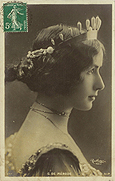
![fig 2: Reutlinger, Untitled [four views of Cléo de Mérode]](/images/stories/spring_08/articles/garv_02a.jpg)
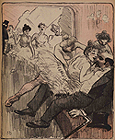
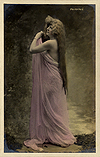
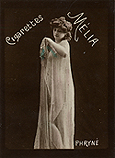
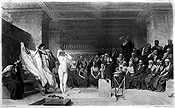

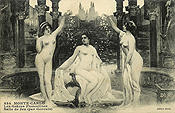
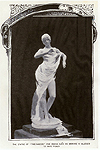
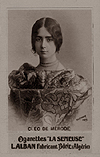
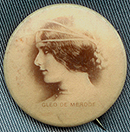
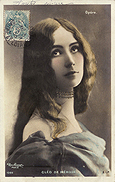
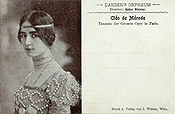
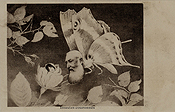
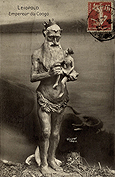
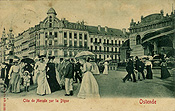
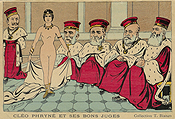
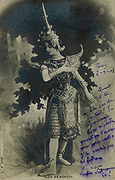
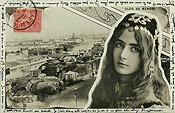
![fig 20: Anonymous, Untitled [Cleo de Merode's head in landscape]](/images/stories/spring_08/articles/garv_20a.jpg)
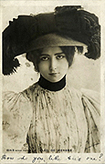
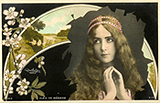
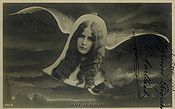
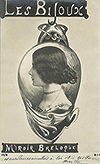
![fig 25: Anonymous, Untitled [Cleo de Merode]](/images/stories/spring_08/articles/garv_25a.jpg)

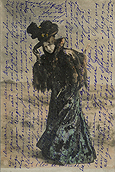
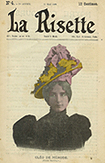
![fig 29: Anonymous, Untitled [Cleo de Merode and rivals]](/images/stories/spring_08/articles/garv_29a.jpg)
